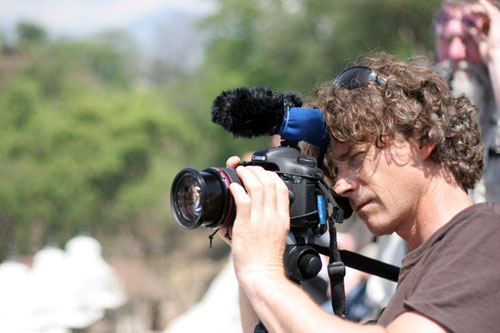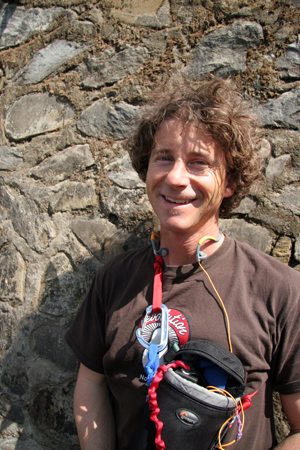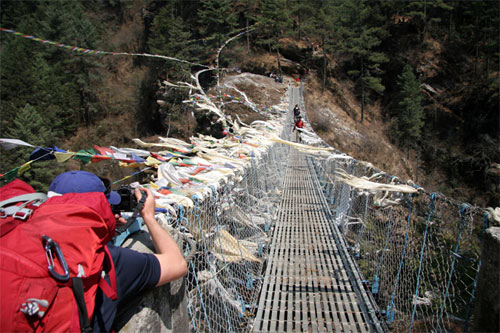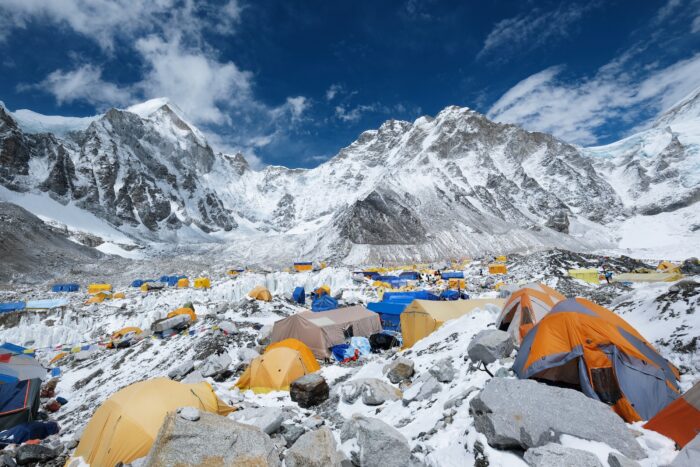By STEPHEN REGENOLD
Scott Simper grew up on a horse ranch in rural Utah. He competed in rodeo events as a teenager. “I’m still a cowboy at heart,” said Simper, 41, a split-resident of Salt Lake City, Utah, and Christchurch, New Zealand. This spring, Simper serves as head photographer and videographer for Expedition Hanesbrands. You may not see him in the coverage that comes out of the mountain climb. But as the man behind the lens — and, if all goes as planned, Jamie Clarke’s partner to the top of Mount Everest — Simper has a job that’s among the most demanding of anyone involved with the expedition.

An Emmy-nominated photographer, Simper travels the globe shooting for outfits as diverse as National Geographic and Red Bull. He has trudged through mosquito-infested swamps in Siberia. He’s scaled Yosemite big-wall rock climbs, 3,000 vertical feet of ascending in a day. Photo shoots have sent him on multi-week powered-parachute flights in the United States and on rappels deep into caves in Sweden.

His niche? “Suffering,” Simper said. “If you need someone to put up and shut up, I can do it.” Mount Everest will be one test for sure. Suffering is par for the course living at high altitudes and climbing 8,000-meter peaks. Other recent suffer-fests Simper has endured include shooting for television shows like “Deadliest Catch,” where he hung with fishing crews in big Alaskan ocean waters, and “Ice Road Truckers,” a show that highlights long and dangerous remote trucking routes. One of the trucks he was filming in last year crashed, exasperating a shoulder injury he suffered five years ago when he was crushed by an ice sheet kayaking in the Arctic.
Simper hopes to stay injury free on Everest. He has been training this winter in his backyard, which is the Wasatch Mountain Range of Utah. He climbs peaks in the backcountry and skis from the summits. “I have been trying for 10,000 vertical foot days to prepare for this trip [to Everest],” he said. Years of mountain sports, including skiing, climbing, running, and adventure racing, have tempered his body for the Everest climb, he said. That and the four to five times a week he gets outside to “live the outdoors lifestyle” with his wife, an athlete and mountain guide.








